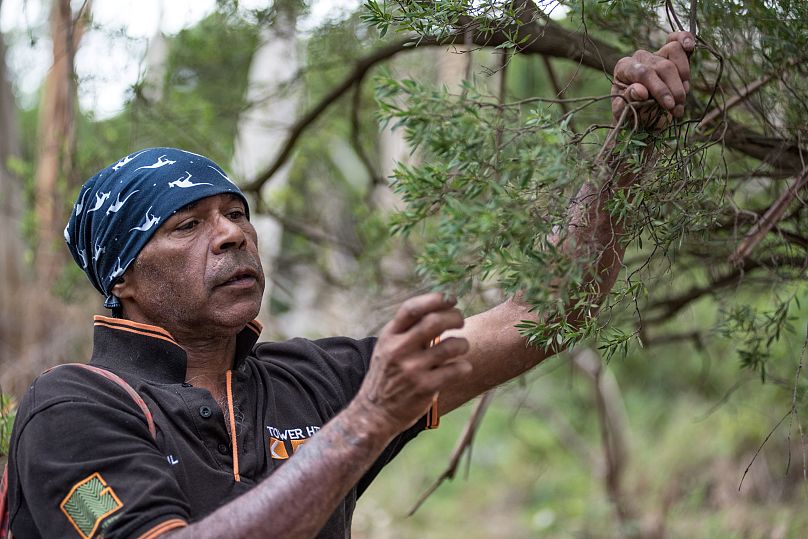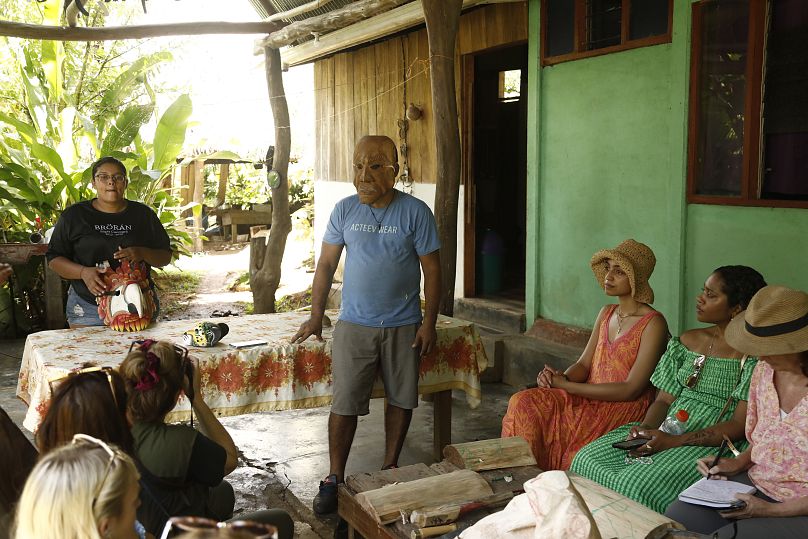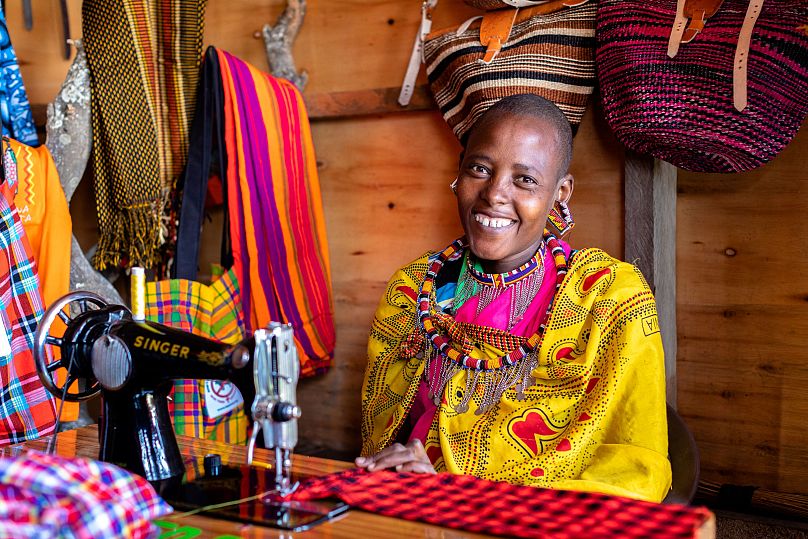From Australia to Costa Rica, Indigenous-led tourism is on the rise. How can you have a 'mind-expanding' and ethical experience?
Any meaningful travel experience should leave you with a deeper knowledge of the place you visit.
The rise of Indigenous-led tourism speaks to an obvious, related truth: who better to teach you than those who have lived there the longest?
Though they make up 5 per cent of the global population, Indigenous communities protect 80 per cent of Earth’s remaining biodiversity - from the glacial plains of Canada to the world’s oldest rainforest in northern Australia.
Done right, trips that respect Indigenous and First Nations peoples can be enriching all around.
“I learnt so much more about the landscape and learning from an Indigenous elder which was fascinating,” says one anonymous traveller after an Indigenous-led trip from Intrepid Travel.
“I feel as though my mind has been truly expanded by this experience.”
Well-known for its responsible credentials, the adventure travel company has developed over 100 Indigenous-led experiences on its small group trips around the world. And it’s not alone in seeing a rise in demand from travellers eager to lean into the origins, culture, and traditions of a destination.
What is Indigenous-led tourism, and why is it growing?
“The pandemic has made everyone more aware of the impact travelling can have on destinations and communities,” reflects Sara King, Intrepid’s general manager of purpose.
“There’s also a growing awareness of Indigenous history in a lot of countries, which is sparking a curiosity in travellers.”
Centring the perspective of these communities is what separates an authentic and fair tourism experience from a shallow and potentially exploitative one.
‘Black cladding’, explains King, describes the way some less scrupulous operators position themselves as a First Nations business, without a significant number of First Nations people in management or ownership. They also fail to provide financial contributions to the communities they operate in.
“To avoid black cladding, do your homework on the businesses and experiences that you visit,” she advises.
The Travel Corporation (TTC), an umbrella organisation of nearly 30 brands, is also trying to cater to the growing demand for Indigenous-led tourism in a sustainable way.
“We know our guests are looking for more insightful and meaningful cultural immersion, and we want to connect them to Indigenous people with sensitivity and impact,” says Shannon Guihan, Chief Sustainability Officer and Head of TreadRight, a non-profit within TTC.
It has cultivated a series of ‘Make Travel Matter’ experiences that further the UN’s sustainable development goals - many of which are geared around community.
“Preserving and reclaiming culture, as well as providing economic and social benefits to Indigenous people, are integral parts of this,” adds Guihan.
How can Indigenous-led tourism benefit people and nature?
Before building its trips, Intrepid consults with Indigenous communities - seeking permission from elders on what stories and practices they are happy to share.
It also works with communities to help them develop their tourism infrastructure with actions like providing training to business owners. Managed well, the economic impact of tourist groups can help these communities to stand firm in an ever-changing world.
“In Australia, we generated over $550,000 AUD (around €327,000) of revenue in 2022 for Aboriginal and Torres Strait Islander businesses and organisations via procurement, supporting their services and including experiences our trips,” says King.
As stewards of the world’s biodiversity, it makes sense that supporting Indigenous peoples helps shore up the land and nature they care for.
Travellers can see this first-hand on some of Intrepid’s trips - for example on a visit to the Maleku community in Costa Rica. Here, King says, “the tribe are passionate about reforestation and are working to regenerate their area by planting trees and encouraging fauna back to the area.”
In Victoria, Australia, the travel company consulted First Nations people on a tour guide programme which resulted in the creation of the “wawa biik” (‘Hello Country’) business.
One of their tours is at the Euroa Arboretum - a former depot site for road works that has been regenerated into wood and wetland, with walking tracks and an Indigenous plant nursery.
Interested? Here are some Indigenous-led experiences
Great Ocean Road, Australia
New for 2023, Intrepid’s ‘Great Ocean Road and Grampians Adventure’ familiarises travellers with the history of Budj Bim Cultural Landscape.
First Nations guides retell the history of how their ancestors created one of the earliest aquaculture ventures here - designed to harvest kooyang (short-finned eel).
Visitors finish the day with bush tucker like grilled kooyang and macadamia nuts, pickled vegetables, kangaroo, emu, and other local foods.
Térraba River, Costa Rica
Intrepid’s ‘Best of Costa Rica’ trip introduces you to the small Indigenous community of the Térraba, who live on the banks of the Terraba River.
The community consider themselves matriarchal where women are the teachers and responsible for passing information down through generations.
Travellers meet with the community and learn how they’ve lived off the land for more than 500 years, carve their own wooden masks and tuck into a home-cooked lunch.
Sigatoga River, Fiji
Fiji is a beautiful island nation comprising 333 islands in the South Pacific with a mostly Indigenous population.
On Fiji’s largest island, Viti Levu, the Sigatoga River runs from the hills of the Navosa Province down to the sand dunes in Kulukulu, on the famous Coral Coast. A Sigatoga River Safari is the perfect way to explore its immense interior, while getting a glimpse into village life.
The boat stops to take groups into one of 18 local i'Taukei villages (on rotation). Sometimes visitors are invited into the Chief’s house or community hall for a traditional kava ceremony and a yaqona (Fijiian drink) tasting.
Part of the ticketed tour price goes directly back to the villages to help them with various projects such as electrification, telecommunications, education and health initiatives.
Kenya and Tanzania, East Africa
Another new Intrepid trip called ‘East Africa Highlights’, connects tourists with the Hadzabe culture in Lake Eyasi, Tanzania, which has been home to the Hadzabe people for more than 10,000 years.
Travellers get an insight into this ancient culture and a chance to learn about their way of life by meeting members of the community and joining in on daily activities like hunting, gathering and traditional dance.
You can also learn about their unique language, which is thought to be one of the oldest still in use today.
As part of the same trip, you’ll stop in Loita Hills, a remote region that's home to the traditional Maasai people in Kenya. Intrepid’s local partner here is Patinaai Osim, an organisation which supports Indigenous Maasai women and champions environmental sustainability.
The Dakotas, US
Part of the TTC family, Trafalgar’s ‘National Parks and Native Trails of the Dakotas’ trip offers you the opportunity to gain first-hand perspective into the life, history, culture and traditions of the Tribal Nations of South Dakota and North Dakota Peoples.
The trip features visits to Indigenous reservations for traditional ceremonies, dance, storytelling and more, including being welcomed into The Rosebud Indian Reservation.
You can hear from young people by visiting the Lakota Youth Development (LYD), a not-for-profit that aims to reclaim the Lakota language, culture and spirituality by promoting education and healthy lifestyles for youth.
92 per cent of all included experiences on the trip are Indigenous-owned and/or operated, and 100 per cent of the proceeds from these experiences are paid directly to the people or businesses in question.














